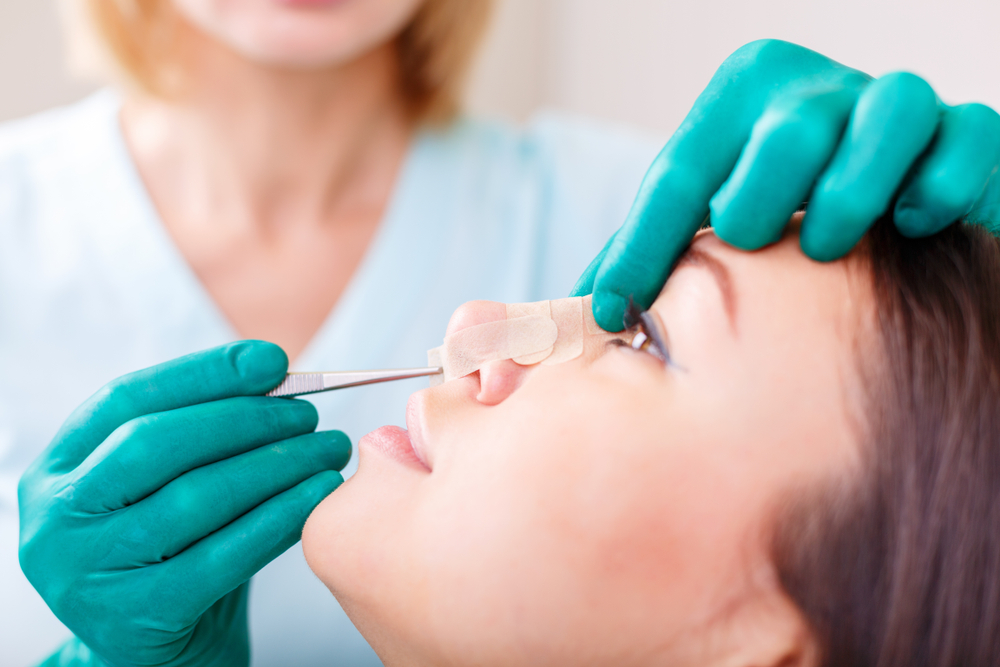Nose aesthetics is an aesthetic operation to change the shape of a nose. These aesthetic operations, also known as rhinoplasty, are shaped according to which part of the nose needs to be smoothed. A nose can be straightened, shrunk or enlarged. Changes can be made in the form of a nose tip. In addition, the curvature of the nasal bone can be corrected, pits and bumps can be removed. To make all these arrangements, it is necessary to organize the structures that make up the nasal skeleton. It is soft tissue, skin, cartilage and bone tissue that shapes the nose. The nasal root is formed by two bones that are interlocked with each other in a roof. This part is very hard and solid. From the middle part of the nose, there are cartilages instead of bone structures. These regions are also softer than the bone segment.
Causes of Rhinoplasty Surgery
There may be many reasons to do rhinoplasty surgery. Most of these are made for cosmetic purposes as well as for functional purposes. For example, problems of breathing caused by nose and structure can be eliminated by rhinoplasty. For cosmetic reasons, the most common problems that people with nasal aesthetics say are septum deviations, bulges or pits in the nose arch, and very wide or very narrow nasal structures. There is no such thing as perfect nose, and every change made in this should be done taking into account the other structures of the face. For this reason, it is very important to have a realistic expectation before making this operation.
Rhinoplasty Surgery
In rhinoplasty surgery, some of the nasal tissues may be removed, tissues removed from other tissues may be inserted, or shape changes may be made on the existing structures. Depending on the purpose of the operation, one or more of these changes may be applied. There are two basic methods used in these surgeries. One of these methods is called open rhinoplasty. In open rhinoplasty, an incision made through the nostrils reveals nasal structures and surgery is performed. Although open rhinoplasty provide an easy field of view to the surgeon, there is a likelihood of visible traces after surgery. In closed rhinoplasty, the surgical incisions are made through the nostrils. In this method, there are no visible traces after surgery because the cuts are not in an area that can be seen from the outside.
Rhinoplasty can be done with both local anesthesia and general anesthesia. During general anesthesia, you will be anesthetized during surgery, you will not hear or feel anything. In the operation of rhinoplasty performed with local anesthesia, only medicines that prevent pain sensation around the nose are applied. You will not feel pain during the surgery, but you will hear the surgery team talking, you will be awake during the whole operation.
After Rhinoplasty
To protect the nose shape and prevent bleeding after surgery, you can apply perforated silicone leaflets that allow you to breathe nose into your nose. These silicone leaflets are usually removed on the 2nd day of surgery. It is normal to have a slight discharge when they are removed. Sometimes small plastic pieces called splints can be placed into the nose to prevent scarring. They will be removed in a week. Outside the nose, a plastic gypsum splint is made to hold for a week.
It is normal to have sensitivity in and around the operating area for several weeks after surgery. You should not blow your nose for 1 week after surgery. Otherwise, there may be bleeding in this place. If you are going to sneeze, your mouth is open sneeze and you need to protect your nose. In the first two weeks, you may have a discharge from your nose, which is normal. During the first 10-14 days your nose will be blocked. Your doctor may prescribe drops or spray to relieve you.
It takes about 3 months to normalize your nose structure. Sutures in the nose will fall on their own over time. The first week, you may have swelling around your nose and your eyes, in time they will pass. Using a high pillow for a few days can help you in this regard. Most of the swelling goes down in two weeks. Most of the swelling goes down in two weeks. However, it may take up to a year for them to be completely lost and to have the true shape of the nose after surgery. After surgery, the nose becomes very sensitive to the sun. For this reason, it is recommended that you use a high-factor sunscreen cream.
After surgery, you may need to stay in the hospital one night. Sometimes you might be able to go home the same day. At least you can relax at home for a week. Most people may need to get permission from their boss for a week. This is especially important if your job requires physical activity. It is also not advisable to do any sports for six weeks after surgery.


